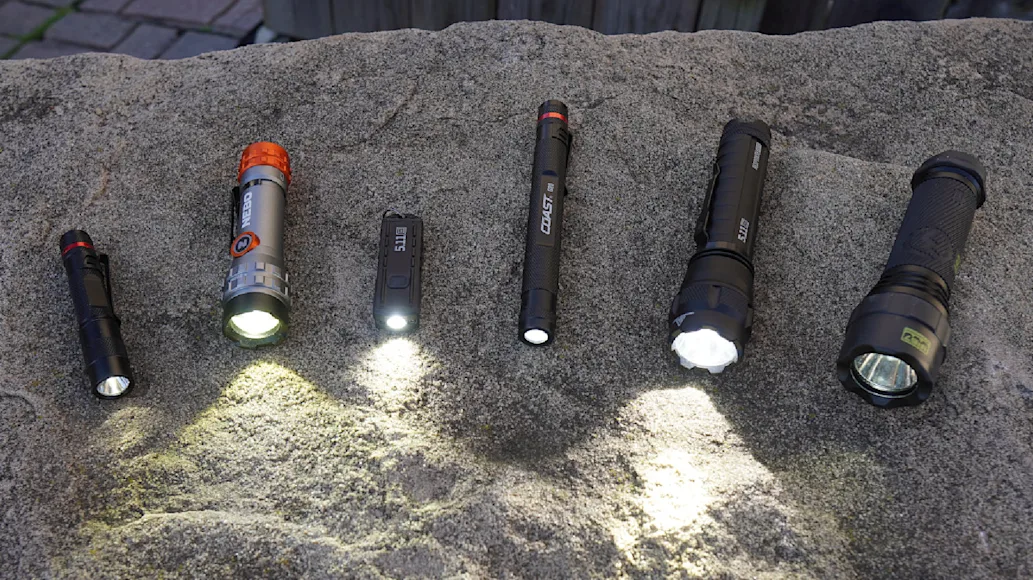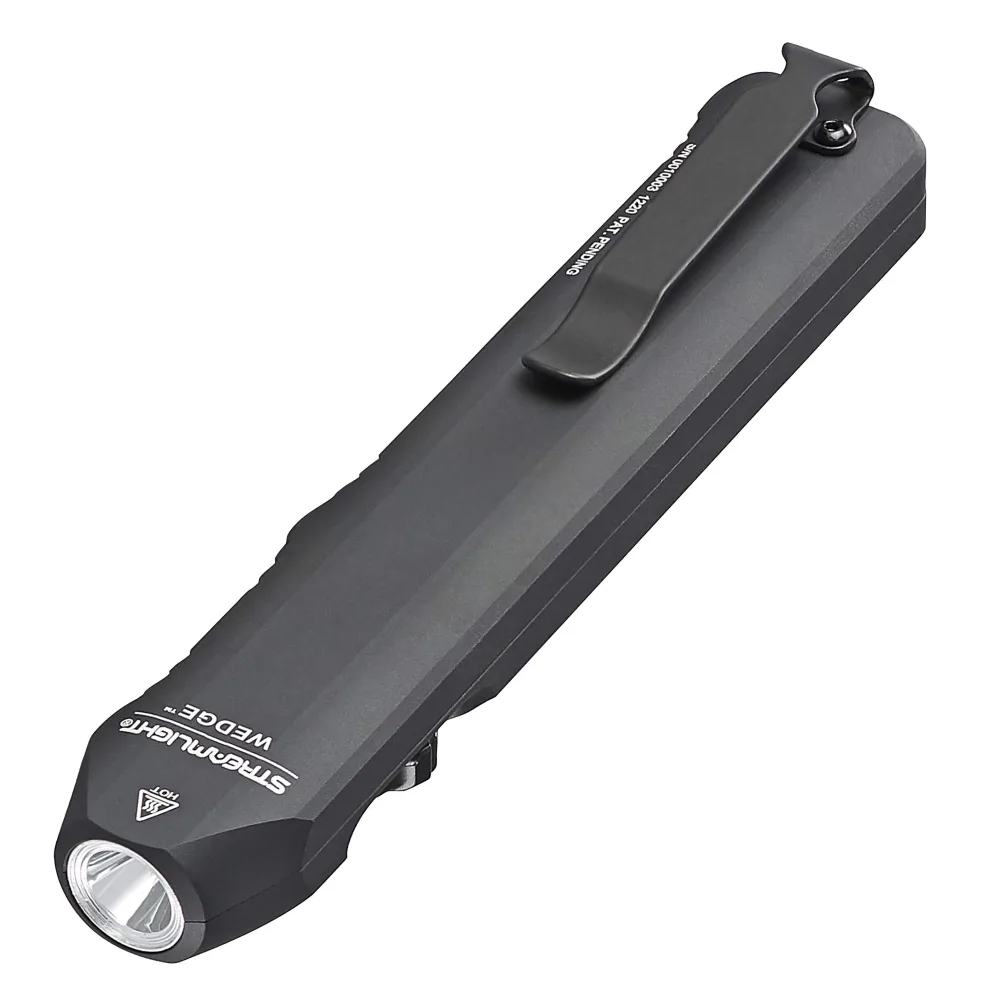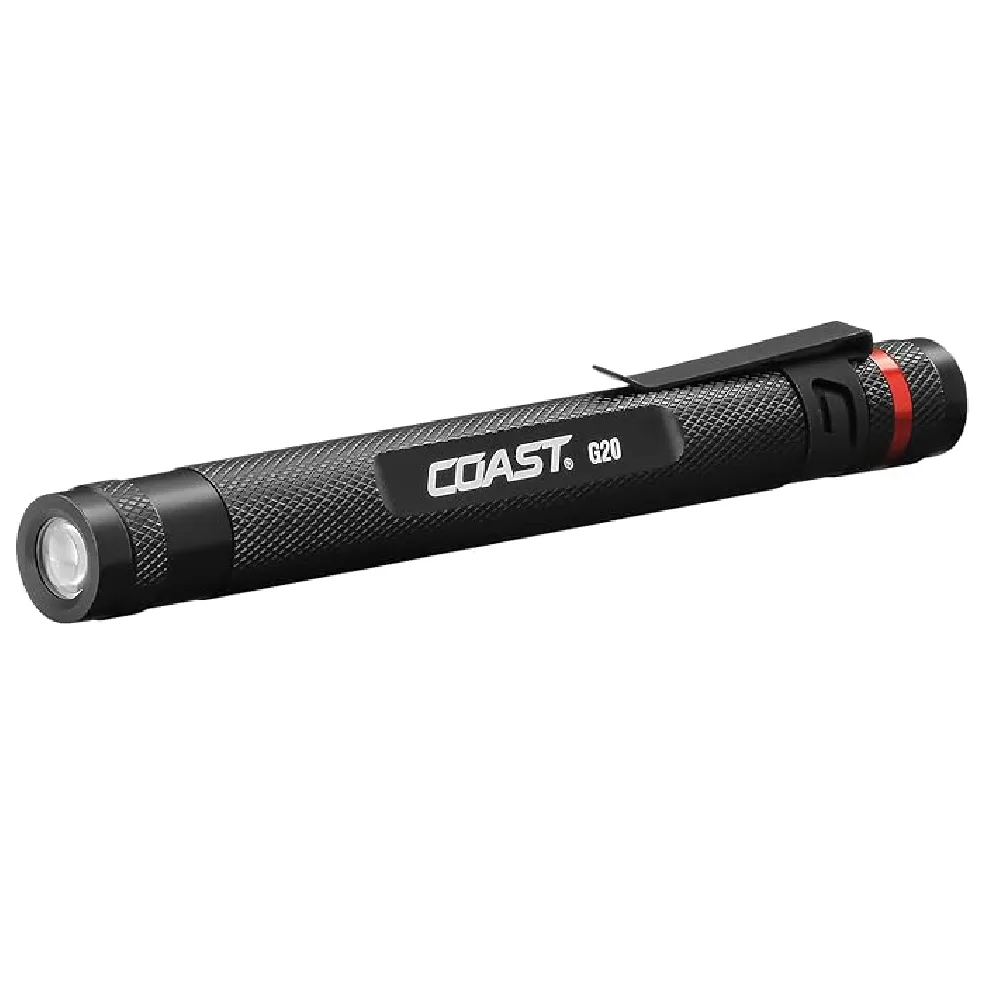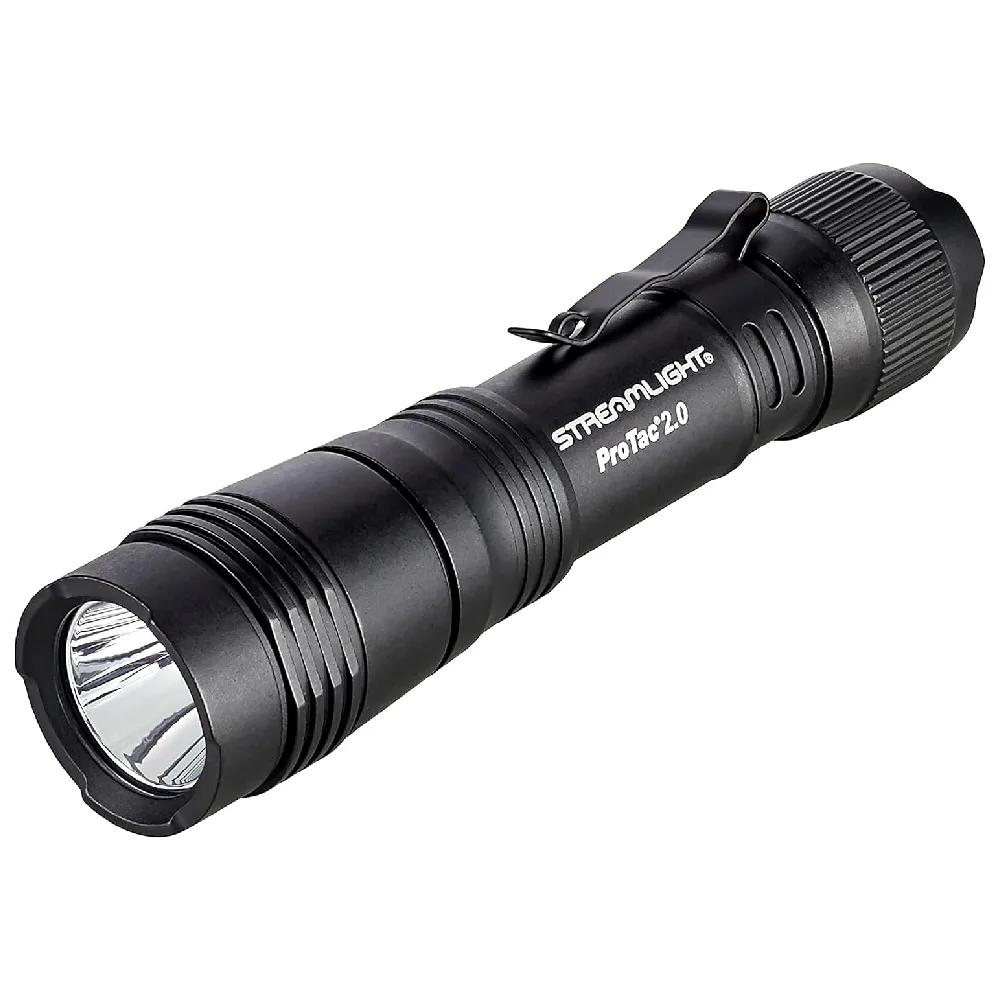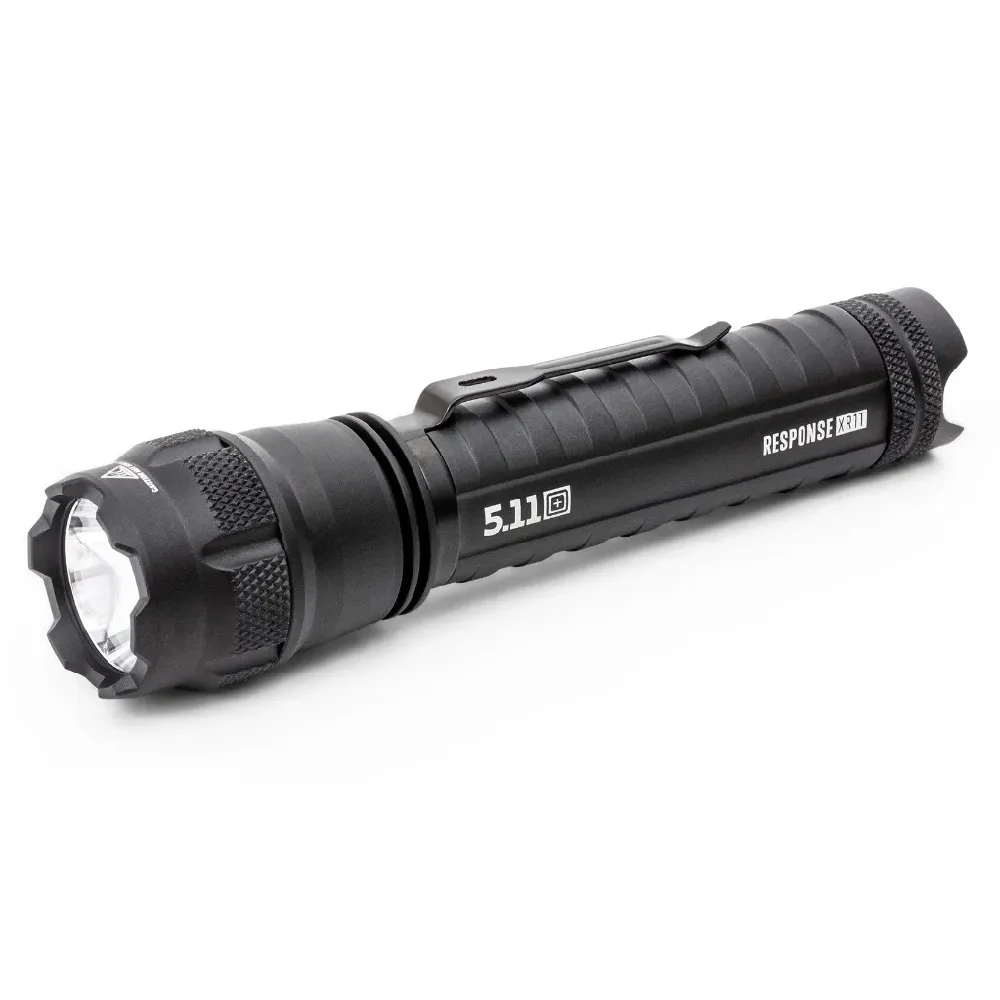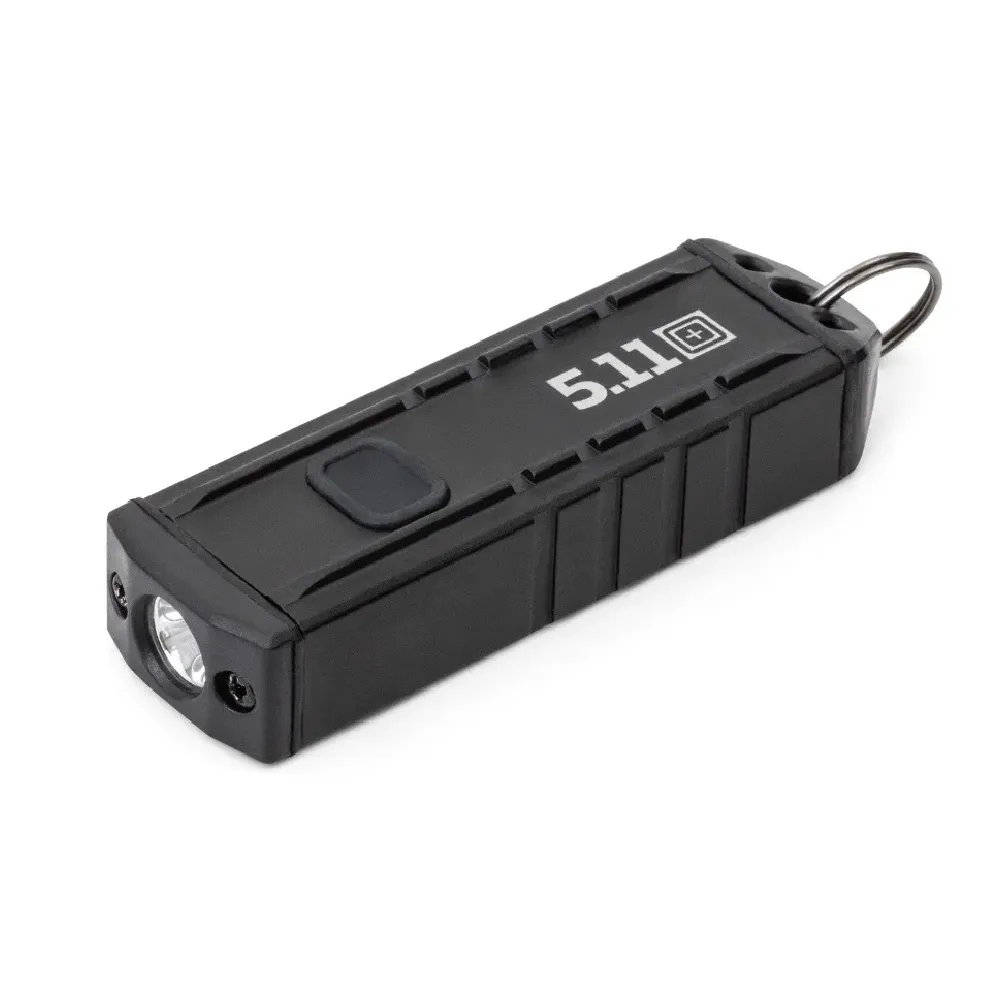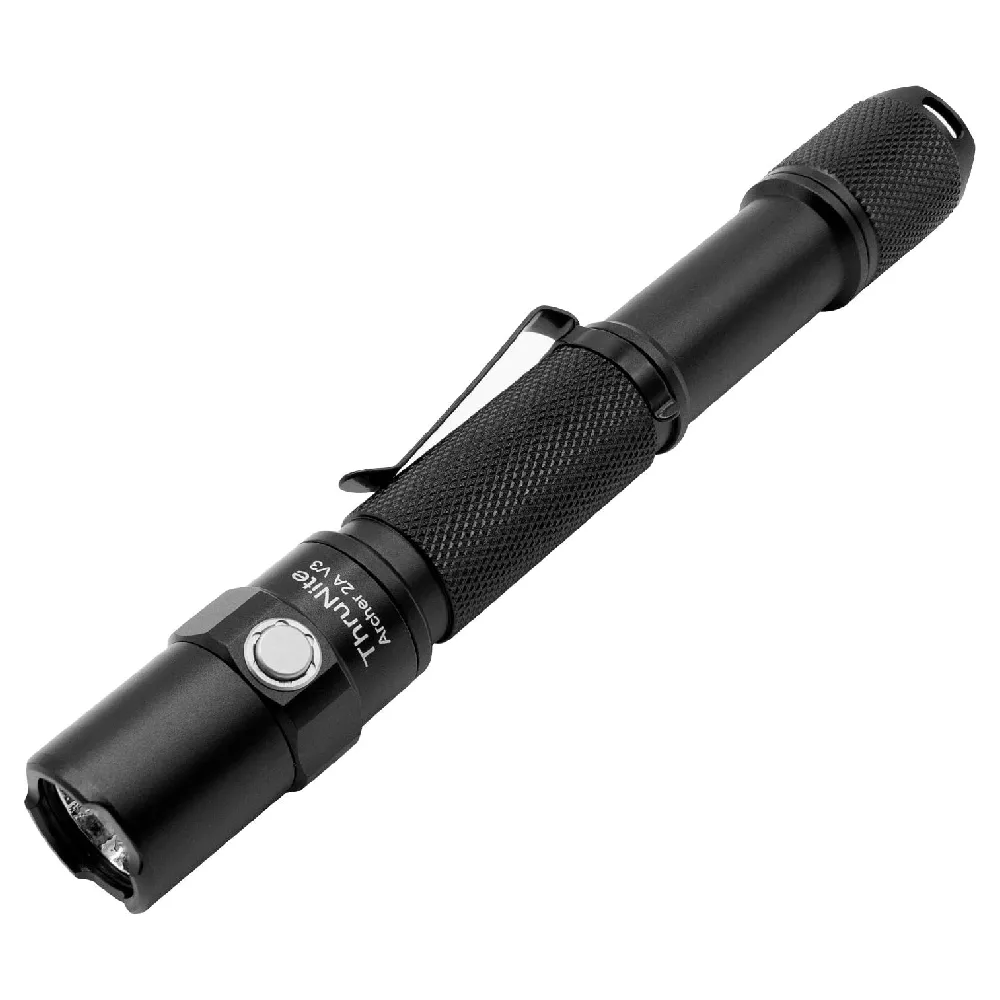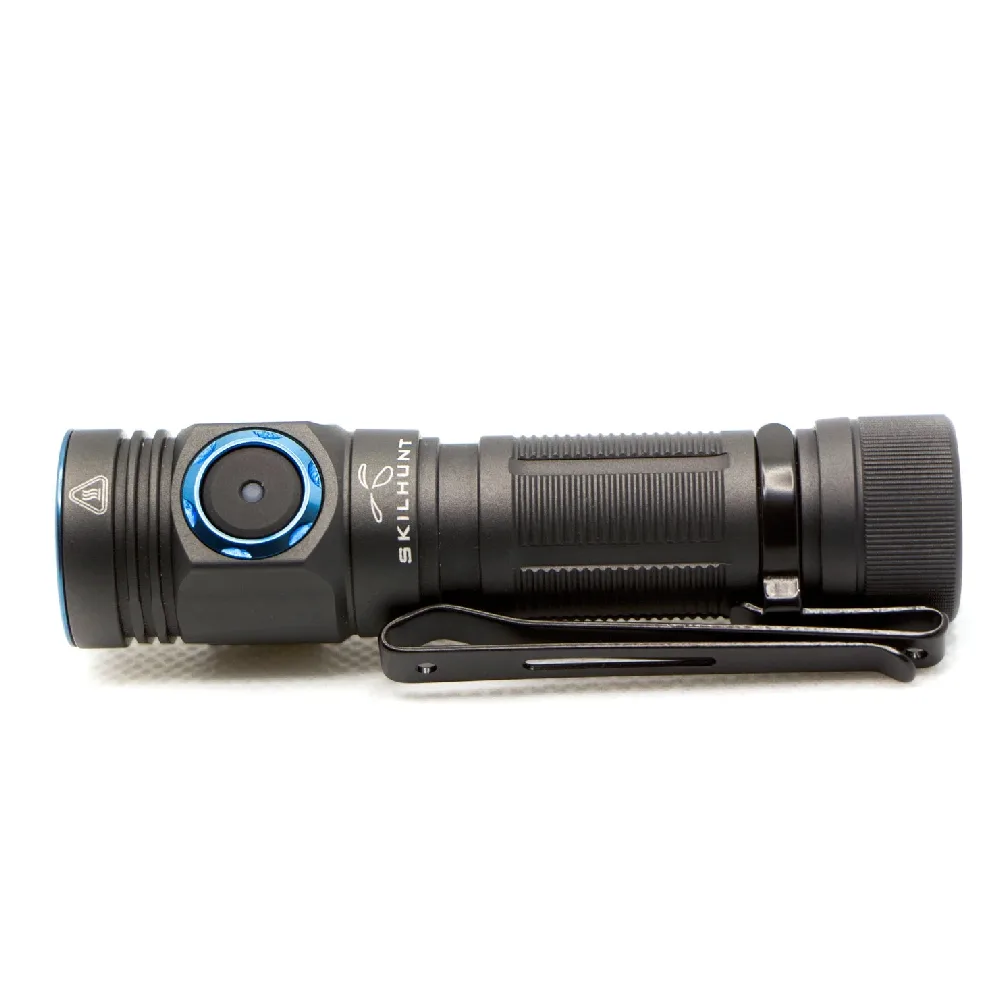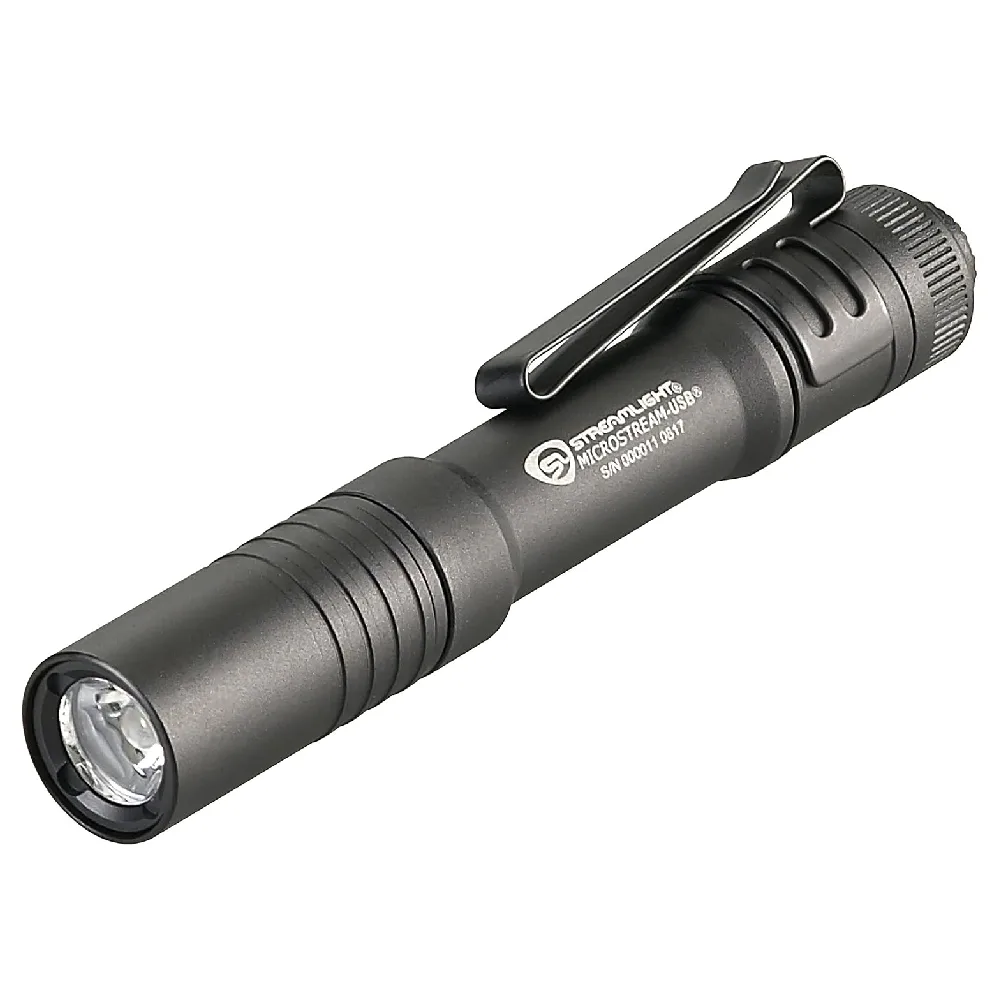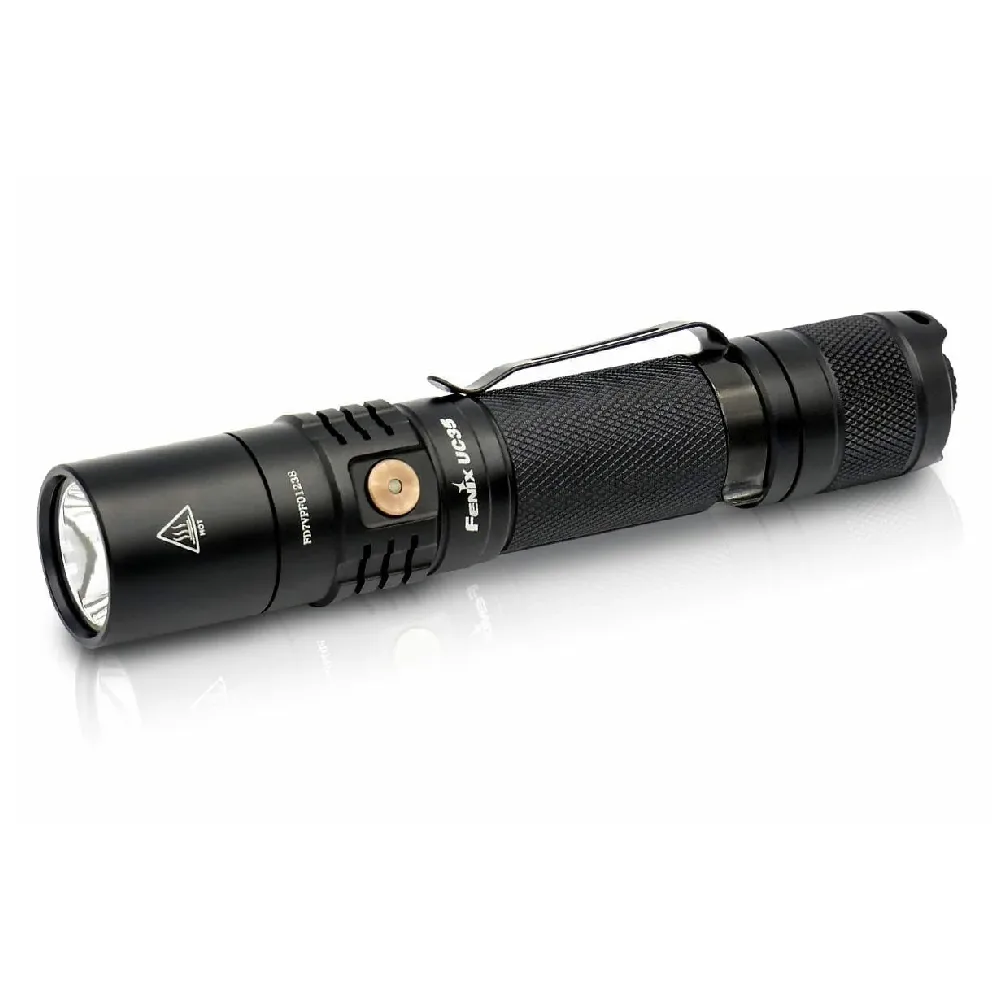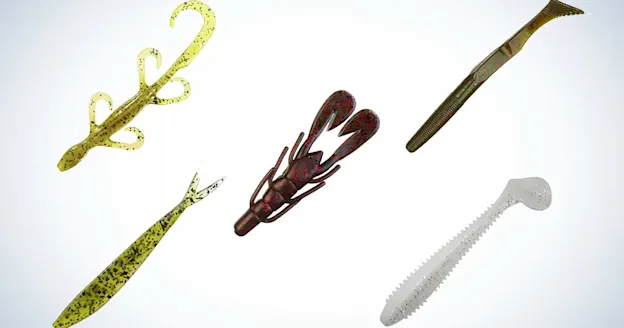We may earn revenue from the products available on this page and participate in affiliate programs. Learn more ›
I’ll admit, I wasn’t always a flashlight guy. For years, I heard people talk about this light or that light for everyday carry. I didn’t understand the point. Unless you had a job that required you to work in the dark, why bother carrying a flashlight everywhere?
Then a buddy of mine convinced me to give it a try. I was shocked at how many times I reached for that light in my pocket. In just that first week, I used it for everything from spotting the dog’s toy after she rolled it under the couch to lighting up dark hallways during work as a private investigator.
I’ve carried an EDC flashlight ever since. Today, they are second only to knives in terms of the number of models and brands that I’ve owned. All three of my sons have been gifted pocket flashlights, and my wife has a couple as well. After years of using, testing, and gifting a number of different lights, I’ve become fond of a few particular models.
That’s what this list is—a full guide to the best EDC flashlights you can buy for a number of different tasks and purposes.
Best Overall: Streamlight Wedge
Best Budget: Coast G20
Best Rechargeable: Streamlight ProTac 2.0
Best Small: Coast G22
Best Tactical: 5.11 Tactical Response XR1T
Best Keychain: 5.11 Tactical Deploy K-USB
Most Reliable: ThruNite Archer 2A V3
Best AA: Skilhunt M150 V3
Best Under $50: Streamlight MicroStream
Best 1000 Lumen: Fenix UC35 V2.0
Best Overall: Streamlight Wedge
Specs
Length: 5.46 inches
Weight: 3.3 ounces
Max output: 300 lumens, with a temporary burst of 1,000 lumens
Pros
The shape makes it easy to grip
Rugged anodized aluminum construction, so it’s built to last
Each Wedge is serialized for positive identification
Cons
Only two illumination levels: 300 lumens or 1,000 lumens
The Wedge is unique among its peers due to its flat, rather than round, shape. This low profile means it slides in and out of your pocket easily—minimizing bulkiness. Rotate the power switch and it will throw a 300-lumen beam, but push the switch forward a bit more, and you’ll hit THRO (Temporarily Heightened Regulated Output) mode with 1,000 lumens lighting your way.
The pocket clip is reversible to make it easy to adjust between right- and left-handed carry. You can also remove it entirely for a more streamlined look. The Wedge is waterproof and is rechargeable via USB-C. If you were to turn it on and leave it be, the battery will last about three hours.
Best Budget: Coast G20
Specs
Length: 5.7 inches
Weight: 2.4 ounces
Max output: 54 lumens
Pros
Slimline profile
Surprisingly durable
Compatible with rechargeable batteries
Cons
Not the brightest option out there
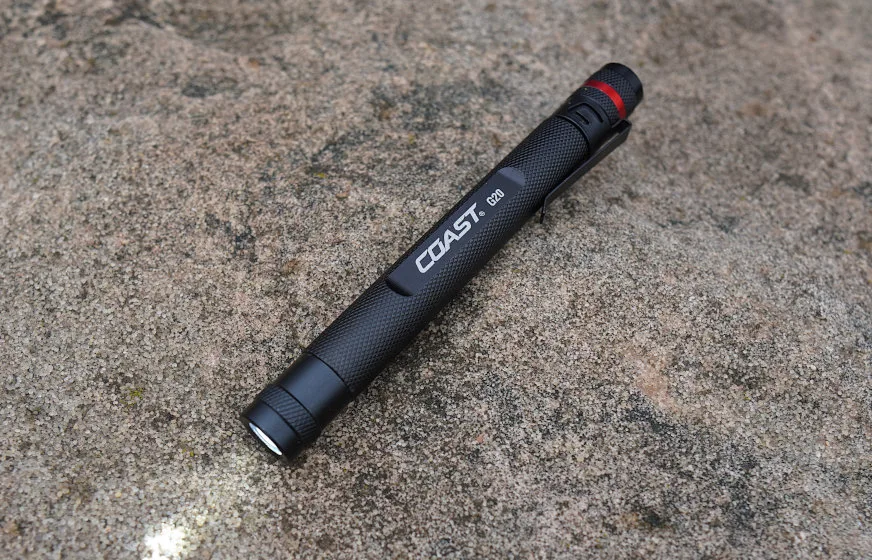
For only $10, Coast’s G20 is a rugged, cost-effective option for anyone who needs something simple. I love the way this one slips easily into a pants' side pocket. Its slim profile makes it easy to carry. I left this on continuously for more than six hours, and it has yet to dim on me using standard alkaline batteries. Coast makes this flashlight compatible with a rechargeable accessory battery that costs an additional $20. That’s still cheap for a rugged little EDC light.
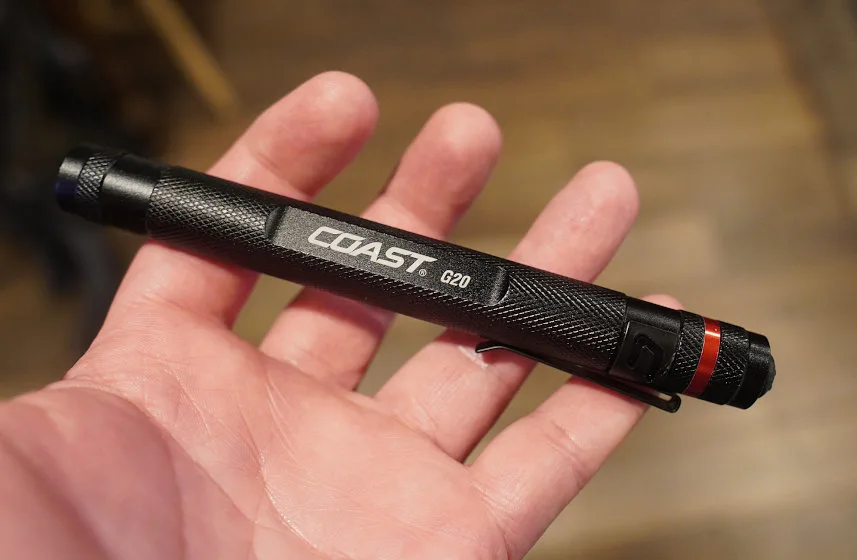
This isn’t the brightest light I tested, but that’s not bad. It throws a nice, even circular beam that makes discerning fine details easy. Coast markets this as an inspection light, and for those tasks, it makes perfect sense. This flashlight also shunned all the abuse I could throw at it during testing. Even if it isn’t used as a primary light, it’s a great addition to an emergency kit or bug-out bag.
Best Rechargeable: Streamlight ProTac 2.0
Specs
Length: 6.1 inches
Weight: 8.25 ounces
Max output: 2,000 lumens
Pros
The 2,000-lumen setting is extremely bright for an EDC flashlight
The construction is dust-tight and water-resistant
It has a holster, so you can wear it on your belt instead of keeping it in your pocket
Cons
Weighs just over 8 ounces, making it a fairly heavy EDC option
This rechargeable light is one of the brightest on our list, with 2,000 lumens on the high setting. It runs on an SL-B50 battery pack, which is included. What’s nice is that you can recharge it inside or outside the light, as there is a sliding cover for a USB-C port a bit behind the head of the light. It also features Streamlight’s TEN-TAP programming, so you can customize the settings and really make the flashlight work for you. It comes with a nylon holster, a 22-inch power cord, and a removable pocket clip.
Best Small: Coast G22
Specs
Length: 4 inches
Weight: 1.41 ounces
Max output: 100 lumens
Pros
Incredibly compact
Battery life is better than advertised
Durable
Cons
Only 100 lumens
The difference between high and low beams isn’t very noticeable
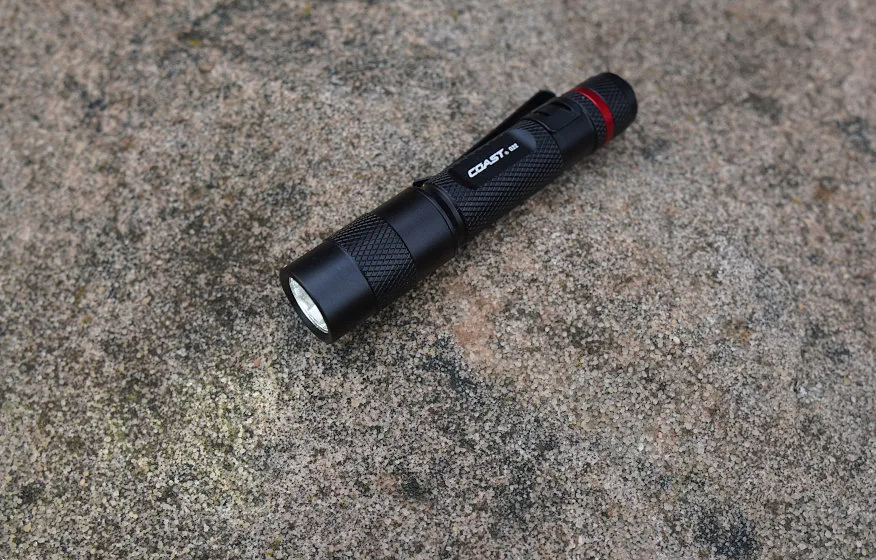
Much like the G20 mentioned earlier, Coast’s G22 is a rugged little light at a great price. I only paid $15 for mine, and it has passed all my tests with flying colors. This thing quickly disappears into a pocket at under two ounces until needed. I have EDC knives that weigh more than this light. The pocket clip is excellent. It’s not the brightest light in the world, but it throws more than enough light in a pinch. This is an excellent choice for people who may only need a light a few times a week.
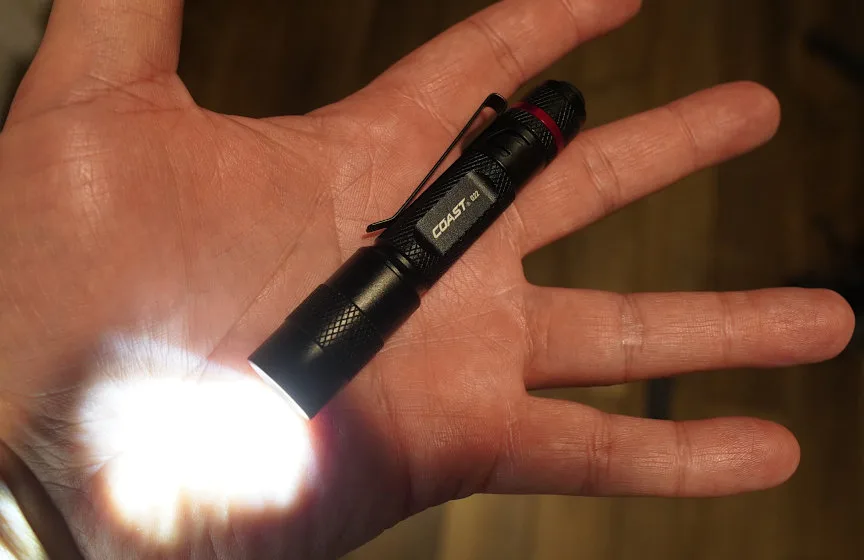
One area in this light that impressed me was the battery life. Coast advertises a little over four hours on the low beam. However, I’ve run it continuously for over six hours without any sign of the battery slowing. There’s also not much difference between the high and low settings. However, I thought the performance was impressive for a single AAA alkaline battery.
Best Tactical: 5.11 Tactical Response XR1T
Specs
Length: 5.75 inches
Weight: Not listed
Max output: 1,200 lumens
Pros
Extremely bright
Durable and excellent water resistance
Surprisingly comfortable to carry
Cons
Non-standardized battery
Gets hot
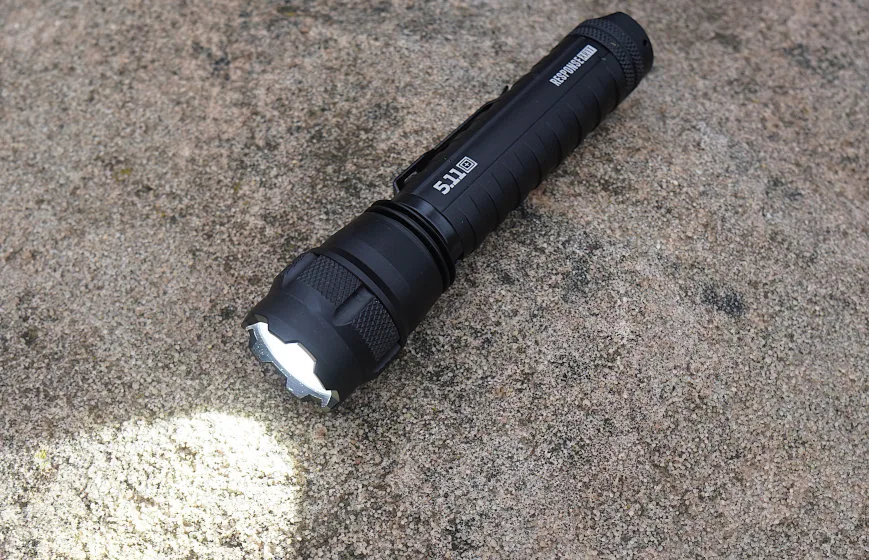
The XR1T is a new, high quality addition to 5.11 Tactical’s excellent lineup of EDC flashlights. During testing, I found he light’s high mode is blindingly bright, efficiently lighting up every corner and nook of the darkest environments. This flashlight has a beefier profile but is still surprisingly comfortable to carry. I like the feel of the rear power button and aluminum body. The length of the body fits rather snugly in my hands. This light has an IPX8 waterproof rating, making it suitable for many lousy weather scenarios.
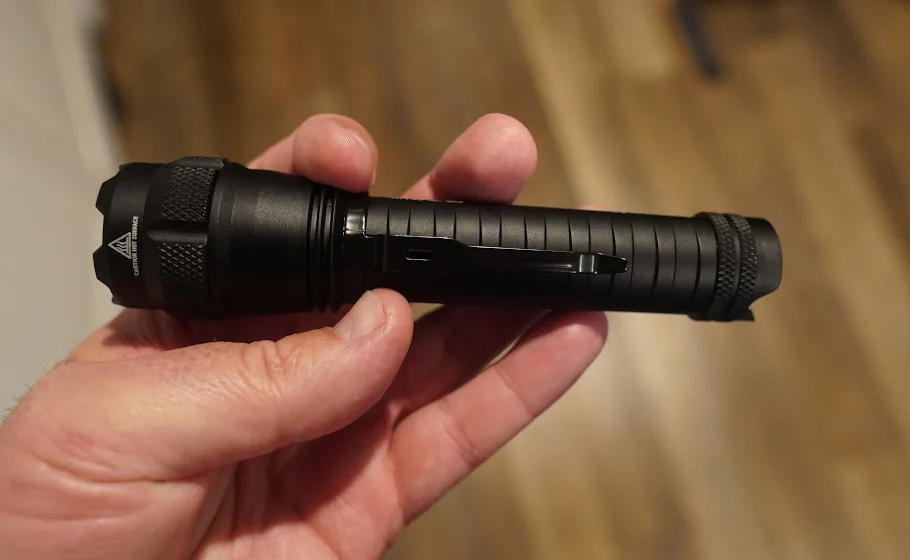
One thing I’ve noticed about 5.11’s lights is that some of them get hot after running for a sustained period. It doesn’t make them unusable, but it’s worth noting. I wish they had gone with a different battery size than a non-standard CR123A. This battery type might be difficult to find in some areas. However, I like that it’s also compatible with an optional rechargeable. It’s a nifty little tactical light with a solid price point.
Best Keychain: 5.11 Tactical Deploy K-USB
Specs
Length: 2.5 inches
Weight: Not listed
Max output: 180 lumens
Pros
Incredibly compact
Smartly designed profile
Fast recharge
Cons
Shorter battery life
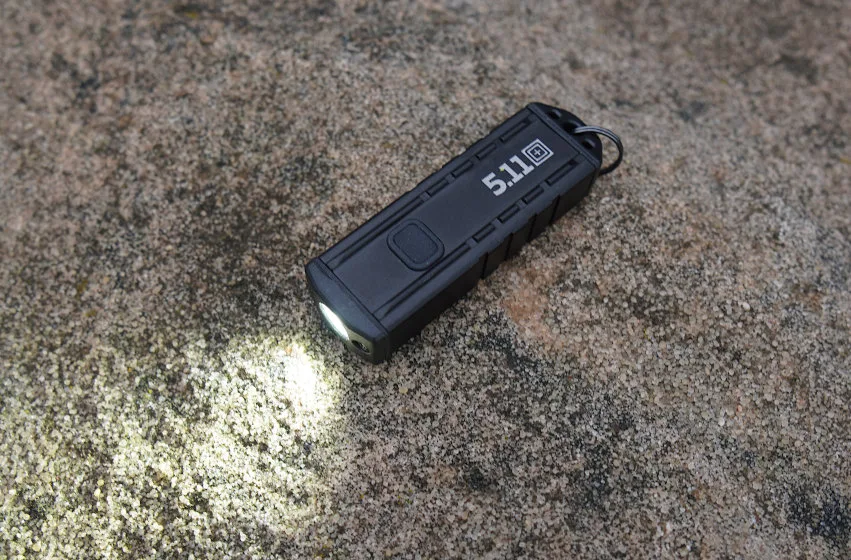
Thanks to its low profile and surprisingly bright light, this little flashlight has earned a permanent spot on my keyring. I found the 180-lumen high beam incredibly useful during my testing. Using a standardized USB-C for the recharge was a good choice. I can easily plug it in using a regular phone charger, and it doesn’t take long to top it off when plugged in. The slim, rectangular profile is surprisingly ergonomic for the size. It slides in and out of my pocket better than a small round light.
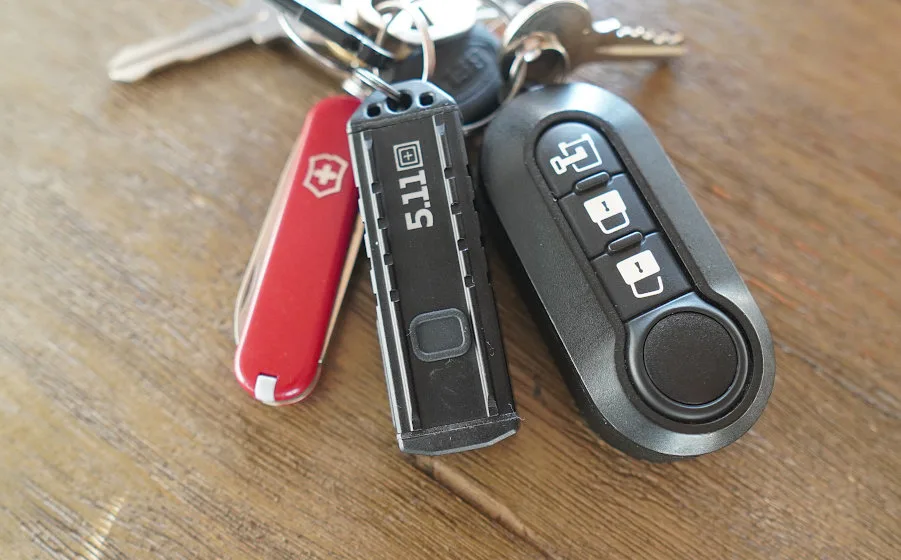
The only thing I don’t like about this one is the short battery life. However, I consider this more of a convenience light. It’s great for scenarios where one needs a light for only a few minutes. It’s expensive for a keychain light, but the quality of the build makes it worth the price of admission.
Most Reliable: ThruNite Archer 2A V3
Specs
Length: 6 inches
Weight: 2.5 ounces
Max output: 500 lumens
Pros
Several light modes so you aren’t locked into one choice
Knurled surface provides a positive grip in challenging conditions
Tail cap switch can be pressed just halfway for a quick flash
Cons
Longer than others we tested
I’ve owned this light for several years, and it has never let me down. It has a tail switch for on/off, but the illumination settings are toggled by a side switch. The entire operation is very intuitive and easy to use, even if you’re rushed or under stress. It has four levels of illumination, ranging from 180 lumens on high to 0.055 lumens on firefly. It also has a strobe mode for emergency signaling or perhaps disorienting an aggressor.
At just over 2 ounces, it fits in the pocket nicely without feeling like a boat anchor. The clip can be used to keep it in place, or you can easily just snap it off entirely. Pro tip: That clip will also keep the light from rolling off a work surface, should you need to set it down.
Best AA: Skilhunt M150 V3
Specs
Length: 3.3 inches
Weight: 1.2 ounces
Max output: 750 lumens
Pros
Tail switch magnet makes it easy to use hands-free
Comes with spare O-rings, should you lose one
Charges magnetically with the correct battery
Cons
The available lumens vary quite a bit with different types of batteries
One of the neatest things about this light is the magnetic tail. This makes it easy to position the light when you need both hands free for working under the hood of the truck. That same magnet also provides magnetic charging, if you’re using the proper type of battery. There is also an attachment point for a thin lanyard, should you wish to add one.
The M150 can use four different kinds of batteries—alkaline AA, Ni-MH AA, 1.5V Lithium, or 3.7V Li-ion 14500. This gives you plenty of power options. It has five light levels, but those levels change based on which type of battery is used. With the 14500 Li-ion, you’ll have 750 lumens at your fingertips. But if you’re using a Ni-MH AA, then you’ll only have 240 lumens at the highest setting.
Best Under $50: Streamlight MicroStream
Specs
Length: 3.87 inches
Weight: 1.2 ounces
Max output: 250 lumens
Pros
Has an unbreakable, scratch-resistant polycarbonate lens
A combination pocket/hat clip keeps the light in place
Weighs less than two ounces with the battery
Cons
Wall adapter for charging is sold separately
There are a lot of cheap flashlights on the market, but this one punches well above its price point. The MicroStream is particularly well-suited for EDC, given its slim profile and compact design. It will easily fit in the palm of your hand with plenty of room to spare. It has two settings, with 250 lumens on high and 50 lumens on low. The tail switch controls everything. Hit it once to turn it on and double-bump it to cycle between settings.
The white C4 LED is clean and bright on either power setting. It is rechargeable via a mini-USB port found by sliding a sleeve at the lens end of the light. While charging is easy enough to do, the average user will go a week or two, probably more, between charges.
Best 1000 Lumen: Fenix UC35 V2.0
Specs
Length: 5.5 inches
Weight: 3.13 ounces
Max output: 1,000 lumens
Pros
Boot up power indicator lets you know right away where you stand
Has five lighting modes, plus a strobe
The light’s range is nearly three football fields long
Cons
Some users don’t care for dual-switch operation
This is the improved version of the original UC35, and they’ve increased the lumens to 1,000 and the throw to almost 300 yards. While that’s a lot of light, just as nifty is the Moonlight mode that puts out just a single lumen. That’s perfect for checking a map at night without blinding you. The UC35 is ruggedly built from aircraft aluminum and is designed for real world use and abuse. This is a dual-switch light, with a power on/off at the tail and a side switch to change settings. It charges via a micro-USB port on the side of the frame.
How We Tested EDC Flashlights
Over the last decade, I’ve tested out numerous EDC flashlights. Some were great, and others ended up in the junk drawer. The most common failings of poor lights are a weak battery and poor lumen output. Naturally, those two categories ended up being the most important factors in my testing. I chose lights that have long battery lifespans, strong lumens, and a compact design. I also took into account the durability of each light, user-friendliness, and any included accessories to make my picks.
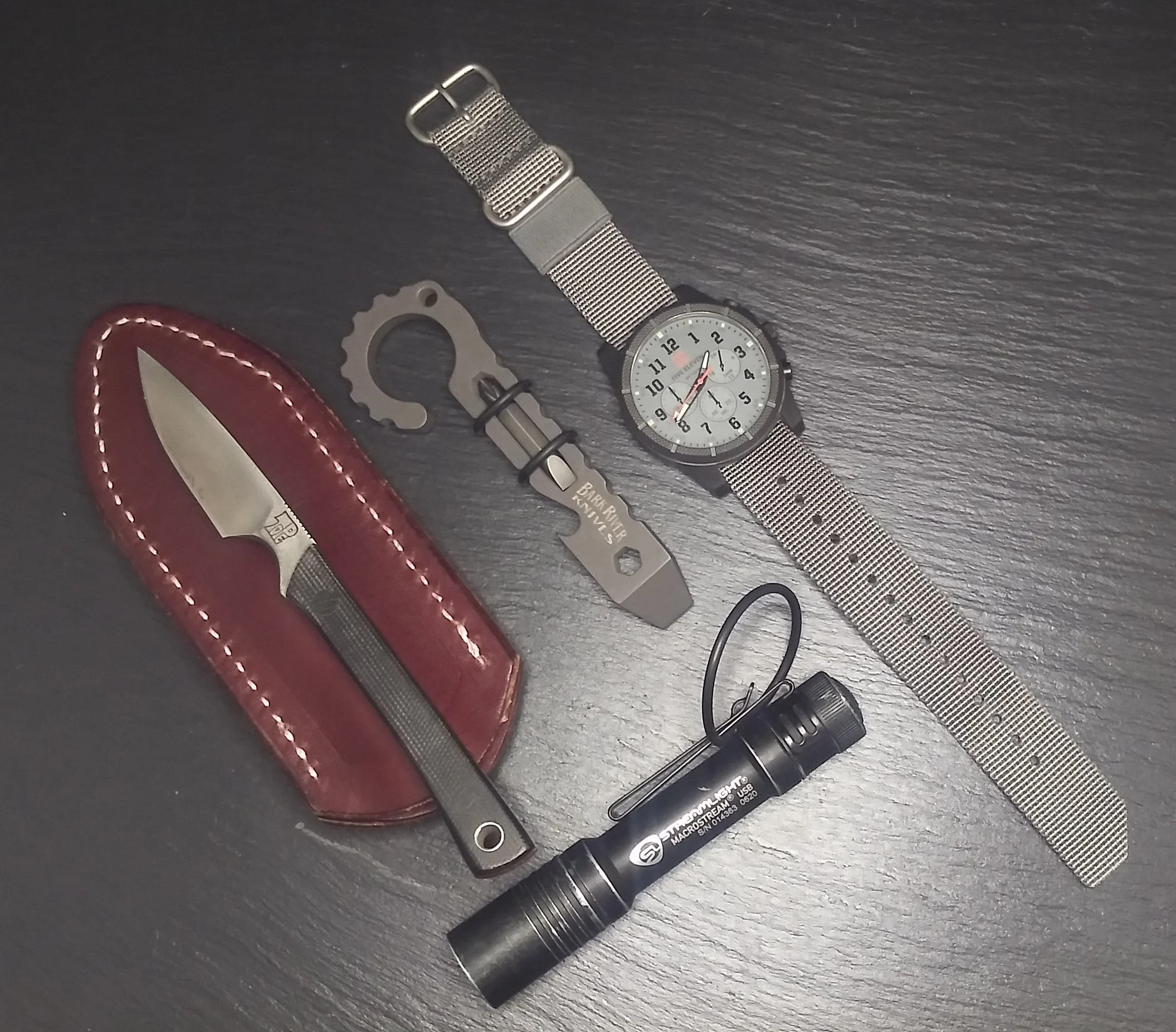
How did I test them? I’ve been carrying some of these lights for almost ten years. I know they work because I carry them, use them, and gift them to family and friends. They are trusted lights that can help around the house, at work, or out in the field.
How to Choose an EDC Flashlight
There’s a wide range of flashlights on the market that come in all shapes and sizes. But when we’re talking about an EDC flashlight, there are some specific qualities we want.
The first consideration is size. By definition, an EDC flashlight is one that you’ll carry virtually every day. As such, it needs to be small enough to carry comfortably. And unless you don’t spend your day wearing a tactical belt loaded with pouches and loops, you’ll be carrying the light in your pocket.
Ergonomics is another factor. If the flashlight is awkward to use, you’ll find yourself leaving it at home, which defeats the purpose of buying it. Some people prefer a tail switch, where the on/off is located at the end of the light. Others like a side switch. Find what is most comfortable to hold and stick with it.
Flashlights today have their illumination power measured in lumens. Without getting too deep into the weeds and breaking out complex formulas, just think of lumens as a measurement of the total amount of light you’re able to see emitted from the flashlight. The higher the lumens rating, the brighter the flashlight. Remember that a high-lumen light might be overpowering in some instances, so having the ability to dial it down a notch or two is ideal.
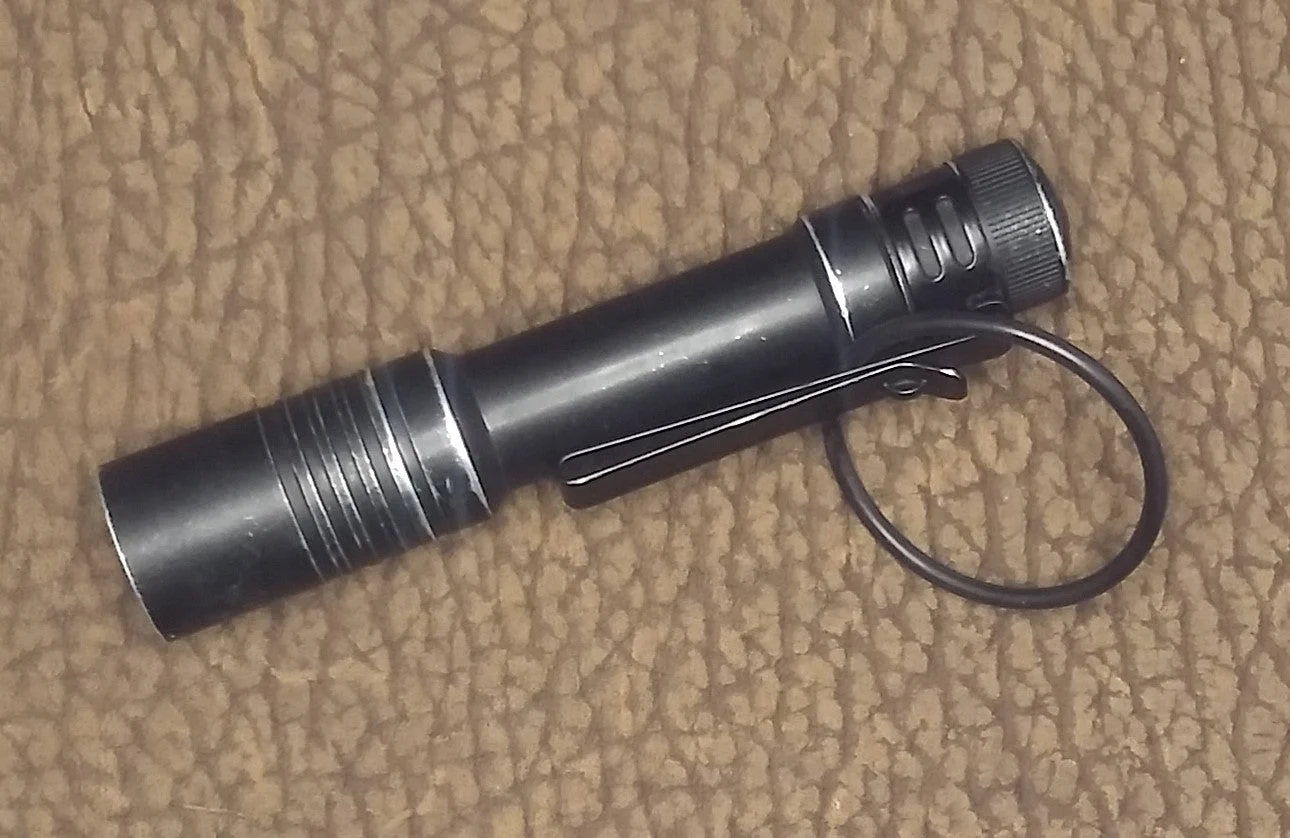
A rechargeable light is often preferred over something that has replaceable batteries. You can always toss a spare battery pack in your EDC bag to charge the light if it runs low. Just remember to include the proper charging cord.
FAQs
Q: What are the best lumens for an EDC flashlight?
There is no one-size-fits-all rule when it comes to lumens for an EDC flashlight. You need to consider where and how you plan to use the light. Anything rated up to about 250 lumens will be fine for most general chores. A range from 250-1,000 lumens will be good for nighttime use, such as checking the backyard to see what’s making that weird noise. Once you hit the 2,000-lumen mark, you’re getting into law enforcement and military needs.
Q: What is the difference between a tactical and EDC flashlight?
Tactical flashlights are built for heavy-duty use and often include features like high-output light that can be used defensively as well as a strike bezel that can be injurious to an attacker. They also often have fairly simple controls for high-stress situations. An EDC flashlight can certainly have those features as well, but will usually have several output levels and other bells and whistles.
Q: What should every EDC flashlight have?
Every EDC flashlight should have multiple illumination settings that are easily toggled. This gives you options, as the high setting might be far too bright for a given task. I like to see a well-built clip that allows me to attach the light to the brim of my hat or clip it to my pocket for security while moving around. Some degree of water resistance is also desirable, as you never know when you might get soaked by a sudden storm or stumble and end up in the drink.
When it comes to EDC gear, which includes everything from knives and multi-tools to pens and watches, you have to carefully weigh your options. This category of equipment has absolutely exploded in the last few years, and there are more options on the market today than ever before. All of the recommendations above are sure to excel in the real world every single day—just like any EDC tool should.
Why Trust Us
For more than 125 years, Field & Stream has been providing readers with honest and authentic coverage of outdoor gear. Our writers and editors eat, sleep, and breathe the outdoors, and that passion comes through in our product reviews. You can count on F&S to keep you up to date on the best new gear. And when we write about a product—whether it’s a bass lure or a backpack—we cover the good and the bad, so you know exactly what to expect before you decide to make a purchase.

